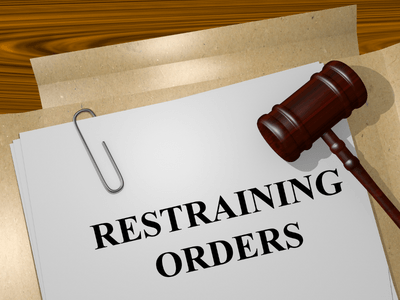If you’re a victim of domestic violence in Texas, you may be considering getting a restraining order against your abuser. This action can be critical to protecting yourself and your loved ones from further harm.
A restraining order – known as a protective order – is a court order that requires an abuser to stop engaging in abusive behavior and keep a certain distance from the victim. This type of legal order can provide important protection for victims of domestic violence, which is why I want to provide you with valuable information about the process of obtaining one.
What to Know About Getting a Restraining Order in Texas
Here are the most important steps you should take to legally obtain a protective order in Texas.
1. Get to Safety
First, before you do anything else, you should find a safe place. If you’re in immediate danger, your priority should be to get yourself and your loved ones to a safe place. What action should you take?
- Leave your home.
- Go to a friend or family member’s house.
- Stay at a domestic violence shelter near you.
- Call the police.
The police can help to de-escalate the situation and ensure you are safe. If law enforcement officers have reason to believe that you’re in danger, they may be able to arrest your abuser. Sometimes, this step may allow you to obtain a restraining order more quickly.
2. Determine Which Type of Restraining Order You Need
Texas law allows different types of restraining orders for victims of spousal violence. These include:
- Temporary ex parte order
- Final protective order
- Magistrate’s order of emergency protection
– A temporary ex parte order, also referred to as a temporary restraining order, is typically issued without notice to the abuser and can provide protection for up to 20 days. It may also lead to you being awarded temporary custody of your children.
– A final protective order requires a hearing with a judge where both parties have an opportunity to present their case, and it can offer protection for up to two years.
– A magistrate’s order of emergency protection can offer protection for up to 91 days, and it is typically only issued when the abuser is arrested for an act of family violence.
Overall, a final protective order will provide the longest period of protection and the strongest legal protections. However, the process for obtaining this type of order can be somewhat lengthy, so it’s often best to pursue a temporary ex parte order in the meantime.
If you called the police as the abuse was occurring and your abuser was arrested, you will likely have success pursuing a magistrate’s order of emergency protection.
3. Gather Evidence
After you have determined which type of restraining order you need, you will need to file a petition for the order that includes evidence to support your case:
- Medical records
- Police reports
- Photographs
- Text messages
- Any other documentation that captures the abusive behavior
Victims of domestic violence may also want to keep a journal documenting incidents of abuse or threats of violence. Be sure to include as many details as possible, such as dates, times, and locations of incidents. You should also have a descriptive account of the abuse itself. Timestamped evidence is a critical aspect of proving your case.
The goal of this evidence is to show that there is a clear and present danger of further violence. As you collect your evidence, keep this goal in mind. However, if you do not have any compelling evidence, your testimony may be enough to obtain a restraining order from the court.
4. Consult With an Attorney
While you are not required to have an attorney to obtain a restraining order, it can be helpful to consult with one. A family law attorney such as myself can advise you on the best type of restraining order to pursue and help you gather the evidence you need to support your case.
If you already have evidence, I can review your records to ensure the information will be sufficient to obtain a restraining order.
Additionally, when we reach the final stages of the ordeal, I can represent you at the hearing for a final protective order. I will fight hard to protect your rights and ensure your abuser is properly restrained.
5. File Your Petition and Serve the Papers
I will work with you to file a petition for a restraining order with the court in your county of residence. Once the petition and all relevant court forms are filed, the abuser will be served with notice of the hearing, including the case details and the hearing date.
It’s important to note that abusers often attempt to evade service. If you are concerned that your abuser may avoid being served or retaliate against you, you should let the court know, as they may be able to take special measures to ensure that the abuser is served.
As your hearing approaches, I will work with you to continue gathering evidence in preparation for court. I will also review your testimony in detail to ensure that you are prepared to explain the difficult situation before the court.
At the hearing, a judge will hear testimony from both parties and review any evidence that has been submitted. They will then decide whether or not to issue a protective order. If they issue an order, it will be served on the abuser and go into effect immediately.
Begin the Process Today with My Help
Domestic violence can leave victims feeling helpless and alone. However, there are legal options available to help keep you safe. By following the above steps, you can take matters into your own hands and get the protection you need.
My advice is to find help so that you are not alone in the fight. The sooner you take action to obtain a protective order, the sooner you can begin to rebuild your life.
With my legal assistance, you can significantly improve your chances of finding the protection you need to move forward. I will serve as your legal advocate and stop at nothing to help you with getting a restraining order that provides you with the most protection.
I currently help victims of domestic violence in Fort Bend County, Brazoria County, and Harris County. If you live in one of these counties, call me right away at 281-944-5485 or 979-267-7660. Let’s discuss the situation and begin exploring your legal options.

